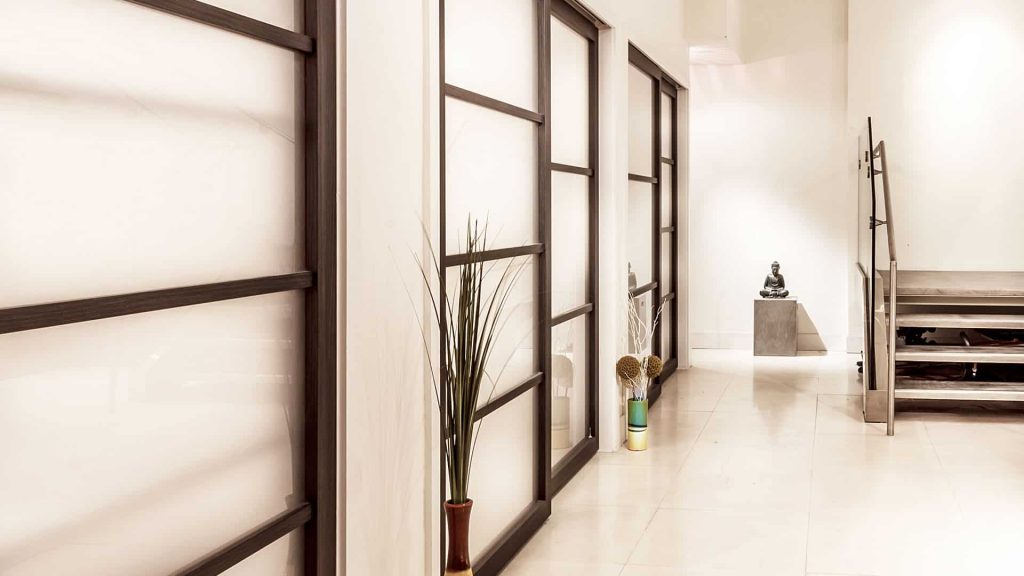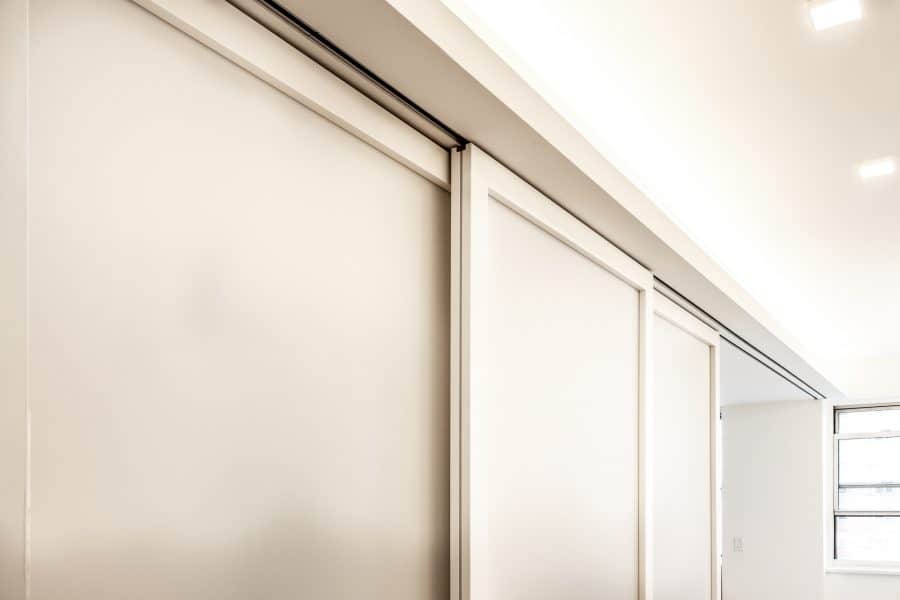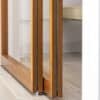
Where to Start?
So you’ve started planning a project and have seen barn doors everywhere from Pinterest to HGTV and you want to include one in your updated digs! Google search “barn door hardware” or “sliding door hardware” and you are inundated with a million options. Sifting through them can be a nightmare, so how do you know what suits your scenario best? Steel or aluminum? Painted or anodized or powder-coated? Top-rolling or bottom-rolling? Not only is the task of combing through the options off-putting, the technical jargon can be intimidating. We always recommend utilizing a design professional for any project, but if you want to go it alone (or you’re a design-pro looking for a primer/brush-up) here’s a basic run-down of what to look for.

Design Decisions
We typically suggest looking at the opening you’re putting a sliding door in front of first – you’ll want to determine whether the hardware is going to attach to the ceiling, the face of the wall, or sit on the floor. If you can attach to the face of the wall or the ceiling above, that’s usually the best route to go as you can avoid having a track on the floor – floor tracks can sometimes be unattractive as well as a potential tripping hazard. Speaking of aesthetics, it’s important to decide whether or not you actually want to see the hardware. There are many rustic styles that emphasize the hardware with oversize wheels, large mounting straps on the door etc. More often than not, these rustic style systems are steel that is painted or powder-coated. On the more contemporary end of things, wheels are concealed and sometimes even the attachment to the door is concealed.

Understanding Key Terms
The weight of your door is also something to consider when deciding what material you want your hardware made out of. For most applications, an aluminum track is more than strong enough (short of doing a door Flintstone style with a slab of stone!). As mentioned before, steel is sometimes defaulted to for certain aesthetics and it’s the go to material for something like a 30ft. tall gymnasium divider. For everything else you’ll find that aluminum does the job. It comes in a variety of finishes but by far the most popular are clear anodized and “mill-finish”, which is to say unfinished (as it left the extruder).
The types of wheels are even more varied than tracks. For a light to medium-duty interior application, plastics are used as they are quiet, require minimal or no maintenance and last a long time. As weight ratings for hardware approach 300 lbs you’ll see some companies utilize ball-bearings for smoother, more durable operation, but again this is heavier than most applications require, so a needle-bearing will suffice for most. Whichever style you choose, it’s worth asking the vendor whether their hardware is “cycle-tested” as that’s a good indicator as to which ones are designed for long-life and trouble-free operation.
Connecting to the door can work a few different ways from a simple bracket to a more sophisticated concealed connector. Straps typically offer little to no adjustment and that can greatly affect the ease with which the door is hung (and fine-tuned). Either way you want to make sure that the connector suits your door material first. If your door is hollow-core, a face mounted strap will be difficult to use; for a frameless glass door you’ll need something that clamps to the glass panel. When fastening to something more typical like wood, you’ll want to be sure to pre-drill for the fasteners to make sure you don’t split the door as you attach the bracket/strap/etc. The easiest door connector will allow you to adjust the door for levelness and height while the door is already hanging – otherwise you may need to take the door down entirely to make adjustments.
At the bottom of the door, you’ll need something to guide it so it doesn’t swing and contact the adjacent wall. If you decide against a floor track, as most people do, you find most offerings feature a small plastic guide that’s either always concealed or minimally visible. The material for the guide is less crucial than for other components as it has minimal force applied to it – if you see signs of wear that likely means the installation was slightly askew.
Summing it Up
Hardware can be a difficult item to evaluate, especially when shopping online, as the variety available is enormous but hopefully these key items to look/ask for will help you arrive at the right hardware for your project.






